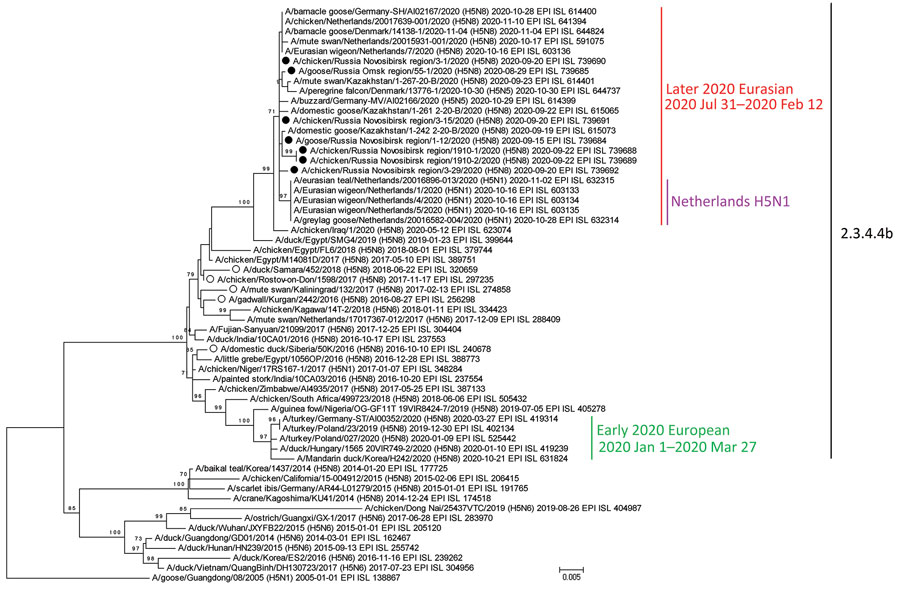Volume 27, Number 8—August 2021
Research Letter
Highly Pathogenic Avian Influenza A(H5N8) Virus Clade 2.3.4.4b, Western Siberia, Russia, 2020
Figure

Figure. Maximum-likelihood phylogenetic tree of the hemagglutinin segment of HPAI subtype H5N8 virus isolated from birds, Novosibirsk, Western Siberia, Russia, 2020, and reference segments from GISAID (http://www.gisaid.org). Filled circles indicate HPAI H5N8 virus strains from Russia isolated in 2020; open circles indicate strains from Russia isolated during 2016–2018. Virus identification number, date of identification, and GISAID accession number are provided for all sequences. HPAI, highly pathogenic avian influenza.
Page created: June 09, 2021
Page updated: July 19, 2021
Page reviewed: July 19, 2021
The conclusions, findings, and opinions expressed by authors contributing to this journal do not necessarily reflect the official position of the U.S. Department of Health and Human Services, the Public Health Service, the Centers for Disease Control and Prevention, or the authors' affiliated institutions. Use of trade names is for identification only and does not imply endorsement by any of the groups named above.